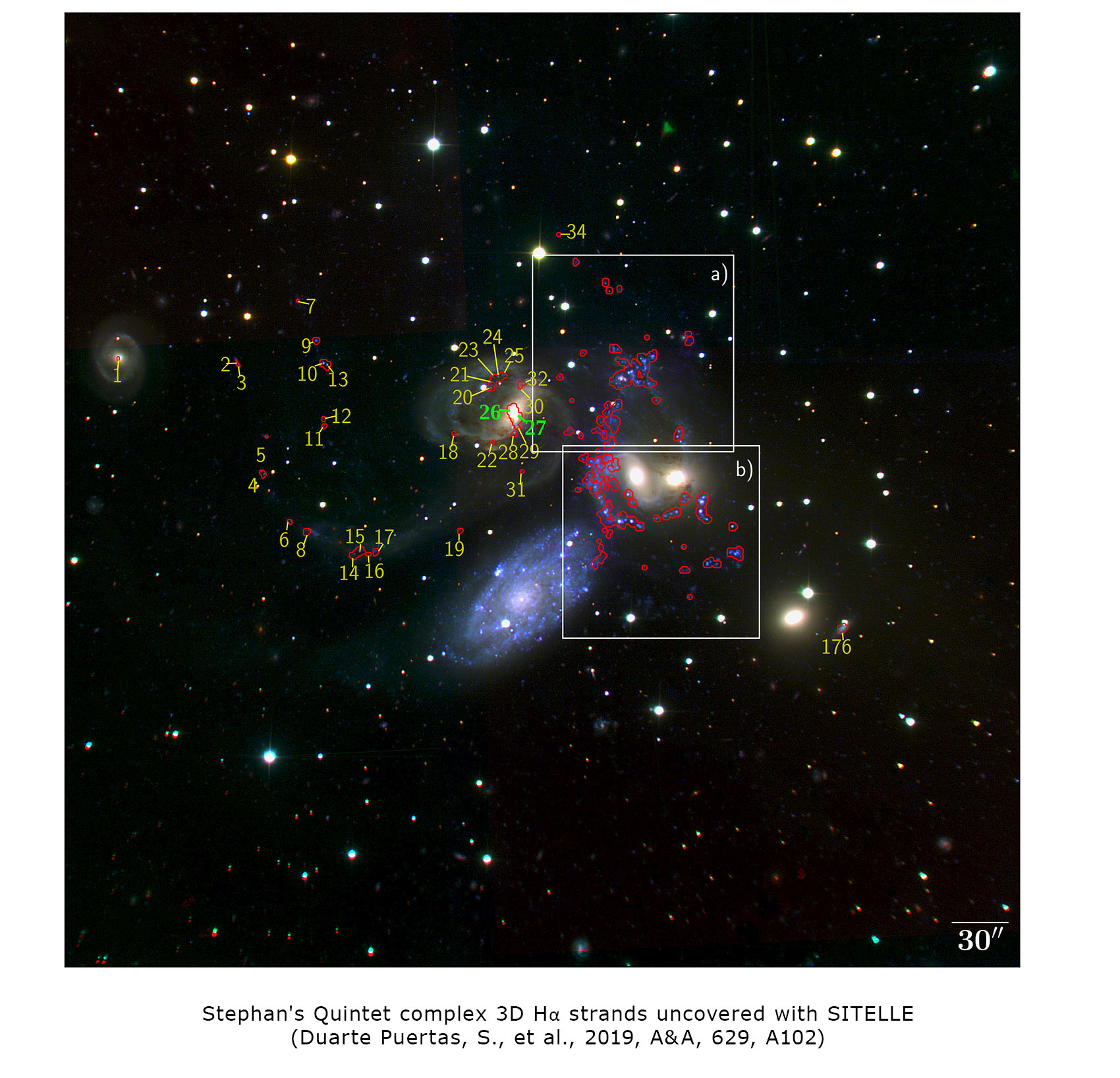Rediscovering the "Stephan's Quintet"
A study offers new results on the "Stephan's Quintet", one of the most paradigmatic compact galaxy systems.
The paper, published in collaboration with the Laval University of Quebec, Canada, and the EEZA-CSIC, has been chosen as the cover for the Astronomy and Astrophysics magazine in its September issue (A&A, 629, A102, Duarte Puertas et al. 2019 )
A team of IAA-CSIC researchers has completed a study of the so-called "Stephan's Quintet" (SQ), a paradigmatic compact group of galaxies in interaction.
They have used the the imaging Fourier transform spectrometer SITELLE, attached to the Canada-France-Hawaii-Telescope, a 3.58 meter diameter telescope at the Mauna Kea Observatory in Hawaii.
The large field of view (11' x 11') and the spectral ranges of SITELLE have allowed a thorough study of the entire galaxy system, its interaction history and the main properties of the ionised gas. Cmpact systems such as the "Stephan's Quintet" are key to understanding the effect of extreme interactions in the evolution of galaxies since the early ages of the universe.
"For the first time, SITELLE is used to study such a system complex as are the compact groups of galaxies. Thanks to SITELLE, we have been able to unravel the complex for the first time framework of structures originated as a result of interactions between the galaxies of the SQ, which has allowed us to clarify several key aspects of its formation and evolution", declares Salvador Duarte, IAA-CSIC, first author of the paper.
The powerful combination of SITELLE and the CFHT telescope has revealed structures of very low surface brightness, unknown to date and mostly distributed outside the system galaxies, thus obtaining the largest cloud sample ionized intergalactic quintet. These objects have allowed reconstruct the chemical history of the group and derive the properties of its gaseous component.
"Another surprise of the study has been the unexpected discovery of a new dwarf galaxy that, sooner or later, will interacting with the rest of the group. This would lead the system to be considered as 'sextet'", said Salvado Duarte.
The work, published in collaboration with the Université Laval de Quebec, Canada, and the EEZA-CSIC, has been chosen as the cover for the magazine Astronomy and Astrophysics in their September issue (A&A, 629, A102, Duarte Puertas et al. 2019)

Instituto de Astrofísica de Andalucía (IAA-CSIC)
Unidad de Divulgación y Comunicación
Silbia López de Lacalle - sll[arroba]iaa.es - 958230676
https://www.iaa.csic.es
https://divulgacion.iaa.csic.es

